The Stroke Treatment Cost in India approximately starts from INR 291025 (USD 3500)
Treatment cost
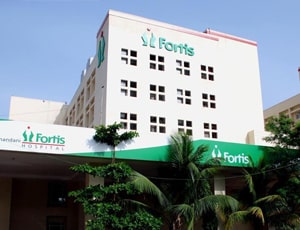
Types of Stroke Treatment in Fortis Hiranandani Hospital and its associated cost
| Treatment Option | Approximate Cost Range (USD) | Approximate Cost Range (INR) |
|---|---|---|
| Stroke Treatment (Overall) | 4050 - 5576 | 333131 - 456576 |
| Intravenous Thrombolysis | 2037 - 3033 | 166515 - 249016 |
| Mechanical Thrombectomy | 4047 - 5570 | 334092 - 455927 |
| Carotid Endarterectomy | 2527 - 3038 | 209052 - 249894 |
| Angioplasty and Stenting | 1518 - 2539 | 124661 - 208568 |
| Rehabilitation (Per Session) | 51 - 202 | 4161 - 16565 |
| Medications and Supportive Care | 1011 - 2023 | 83571 - 165765 |
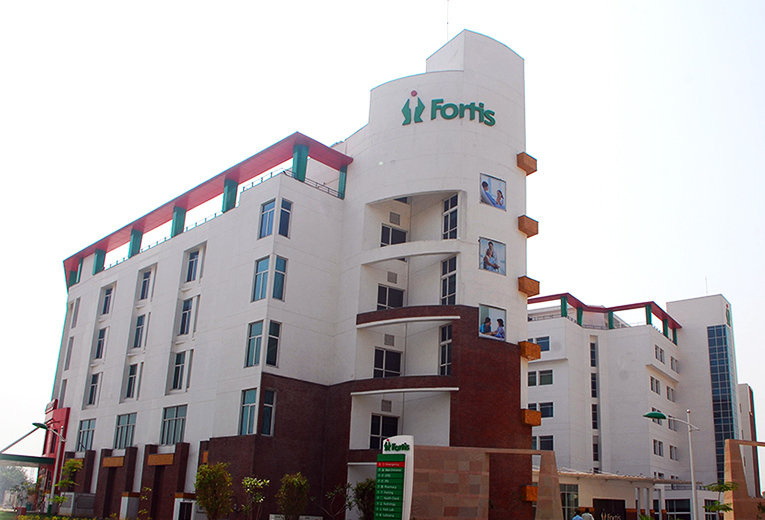
Types of Stroke Treatment & Its Cost at Fortis Hospital, Shalimar Bagh
| Treatment Option | Approximate Cost Range (USD) | Approximate Cost Range (INR) |
|---|---|---|
| Stroke Treatment (Overall) | 5,000 - 12,000 | 410000 - 984000 |
Factors affecting Stroke Treatment cost in Fortis Hospital, Shalimar Bagh
| Cost Factors | Cost Range (USD) | Cost Range (INR) |
|---|---|---|
| Brain Imaging (CT Scan/MRI) | 150 - 300 | 12300 - 24600 |
| Blood Tests | 20 - 50 | 1640 - 4100 |
| Hospital stay | 100 - 300 per day | 8200 - 24600 (per day) |
| ICU Charges | 500 - 1,000 | 41000 - 82000 |
| Stroke Unit Charges | 300 - 500 | 24600 - 41000 |
| Neurologist Consultation | 50 - 150 per visit | 4100 - 12300 (per visit) |
| Physical Therapy | 20 - 50 per session | 1640 - 4100 (per session) |
| Occupational Therapy | 20 - 50 per session | 1640 - 4100 (per session) |
| Speech Therapy | 20 - 50 per session | 1640 - 4100 (per session) |
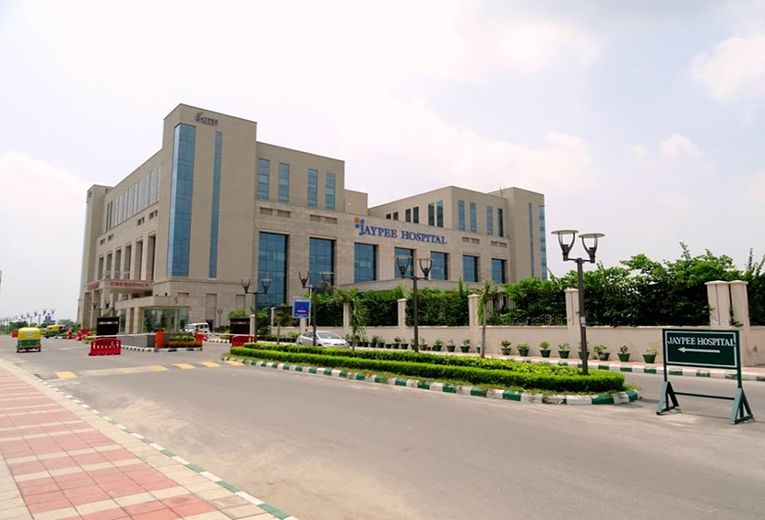
Types of Stroke Treatment & Its Cost at Jaypee Hospital
| Treatment Option | Approximate Cost Range (USD) | Approximate Cost Range (INR) |
|---|---|---|
| Stroke Treatment (Overall) | 6,000 - 15,000 | 492000 - 1230000 |
Factors affecting Stroke Treatment cost in Jaypee Hospital
| Cost Factors | Cost Range (USD) | Cost Range (INR) |
|---|---|---|
| Hospital stay | 110 - 170 per day | 9020 - 13940 (per day) |
| Doctors Fees | 300 - 500 per day | 24600 - 41000 (per day) |
| Nursing Charges | 50 - 70 per day | 4100 - 5740 (per day) |
| Stroke Workup (Diagnostic Tests) | 500 - 1000 | 41000 - 82000 |
| Neurology Consultation | 100 - 200 per visit | 8200 - 16400 (per visit) |
| MRI Scan | 250 - 400 | 20500 - 32800 |
| CT Scan | 100 - 250 | 8200 - 20500 |
| Blood Tests | 50 - 100 | 4100 - 8200 |
| Medications | 20 - 200 per day | 1640 - 16400 (per day) |
| Rehabilitation (if needed) | 30 - 100 per session | 2460 - 8200 (per session) |

Types of Stroke Treatment & Its Cost at Aakash Healthcare Super Speciality Hospital
| Treatment Option | Approximate Cost Range (USD) | Approximate Cost Range (INR) |
|---|---|---|
| Stroke Treatment (Overall) | 5,000 - 15,000 | 410000 - 1230000 |
Factors affecting Stroke Treatment cost in Aakash Healthcare Super Speciality Hospital
| Cost Factors | Cost Range (USD) | Cost Range (INR) |
|---|---|---|
| Hospital stay | 100 - 200 per day | 8200 - 16400 (per day) |
| Diagnostics tests (CT, MRI, blood tests, etc.) | 1,000 - 2,000 | 82000 - 164000 |
| Acute treatment (medications, hospitalization) | 3,000 - 5,000/day | 246000 - 410000 |
| Stroke unit care | 1,000 - 2,000/day | 82000 - 164000 |
| Rehabilitation | 800 - 2,000/month | 65600 - 164000 |
| Follow-up care and medication | 100 - 500/month | 8200 - 41000 |
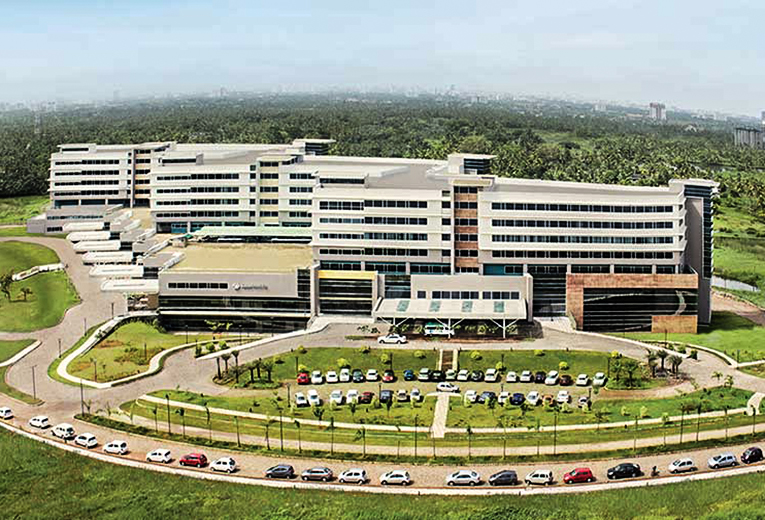
Types of Stroke Treatment in Aster Medcity and its associated cost
| Treatment Option | Approximate Cost Range (USD) | Approximate Cost Range (INR) |
|---|---|---|
| Stroke Treatment (Overall) | 4043 - 5568 | 333157 - 458892 |
| Intravenous Thrombolysis | 2030 - 3044 | 167030 - 250238 |
| Mechanical Thrombectomy | 4046 - 5579 | 331825 - 458106 |
| Carotid Endarterectomy | 2544 - 3052 | 207238 - 250503 |
| Angioplasty and Stenting | 1527 - 2536 | 124916 - 208586 |
| Rehabilitation (Per Session) | 51 - 203 | 4156 - 16593 |
| Medications and Supportive Care | 1020 - 2021 | 83305 - 165763 |
Types of Stroke Treatment in Max Super Specialty Hospital, Shalimar Bagh and its associated cost
| Treatment Option | Approximate Cost Range (USD) | Approximate Cost Range (INR) |
|---|---|---|
| Stroke Treatment (Overall) | 4055 - 5603 | 331342 - 459575 |
| Intravenous Thrombolysis | 2026 - 3060 | 166957 - 249062 |
| Mechanical Thrombectomy | 4063 - 5603 | 331852 - 457320 |
| Carotid Endarterectomy | 2527 - 3049 | 208698 - 250755 |
| Angioplasty and Stenting | 1519 - 2539 | 124321 - 207842 |
| Rehabilitation (Per Session) | 51 - 202 | 4172 - 16588 |
| Medications and Supportive Care | 1016 - 2021 | 83107 - 166479 |
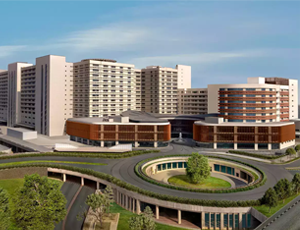
The Amrita Institute of Medical Sciences and Research Centre was established in 1998 by Mata Amritababdamayi Devi. It has 7 branches all over India and is accredited by ISO, NABH, and NABL. The hospitals offer a wide range of specialty and primary healthcare and medical services. It has a team of 800 doctors along with 2600 plus beds including 534 critical care beds and 81 specialties. The hospitals offer advanced and cutting-edge medical treatments ranging from cardiac sciences to radiation oncology. It has 12 super-specialty departments along with 45 other departments.
Asia’s first Bilateral Hand Transplant Surgery was done at Amrita Hospital, Kochi, in 2015. Many awards have been received by the hospitals such as National Healthcare Excellence Award for Best Hospital (CSR Category) in India by FICCI in 2013, India Healthcare Award for the Paediatric Heart Program in 2014, British Medical Journal Award for the Best Surgical Team in South Asia, 2015, and FICCI Healthcare Excellence Awards for Patient Safety and Innovation in Medical Technology. What truly sets the medical services provided by AIMS is the commitment to treating every patient with the utmost kindness, respect, and empathy. The goal is to make patients empowered and take charge of their well-being through healthcare, medical technologies, and education that is patient-centric for early intervention and prevention.
Amrita Hospital in Faridabad is a multispeciality hospital that provides patients with emergency, consultation, diagnostic, rehabilitative treatment, and recovery. It comprises centers for Radiation Oncology, Neurosciences, Bone diseases, Gastro-sciences, Mother and Child care, Cardiac sciences, and Trauma transplants through fully-automated innovative laboratories, the latest cardiac and cath labs, and advanced medical imaging. It houses 670 faculty members, 4500 supporting staff, and a multidisciplinary children’s infirmary with fetal and maternal medicines and pediatric subspecialties. The hospital also runs India’s most comprehensive facility for infectious diseases.
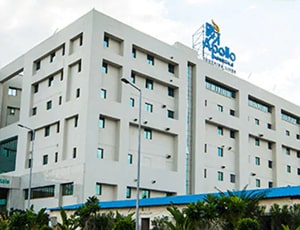
Types of Stroke Treatment in Apollo Hospital and its associated cost
| Treatment Option | Approximate Cost Range (USD) | Approximate Cost Range (INR) |
|---|---|---|
| Stroke Treatment (Overall) | 4486 - 6203 | 360873 - 500879 |
| Intravenous Thrombolysis | 2235 - 3350 | 185158 - 282158 |
| Mechanical Thrombectomy | 4595 - 6145 | 364062 - 503102 |
| Carotid Endarterectomy | 2765 - 3389 | 226680 - 275009 |
| Angioplasty and Stenting | 1651 - 2863 | 137710 - 230334 |
| Rehabilitation (Per Session) | 56 - 226 | 4645 - 18822 |
| Medications and Supportive Care | 1119 - 2271 | 92346 - 187542 |
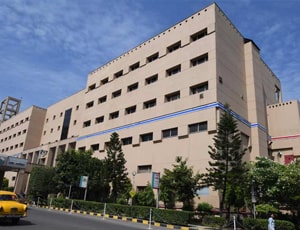
Types of Stroke Treatment in Apollo Multispecialty Hospitals and its associated cost
| Treatment Option | Approximate Cost Range (USD) | Approximate Cost Range (INR) |
|---|---|---|
| Stroke Treatment (Overall) | 4517 - 6084 | 369865 - 504635 |
| Intravenous Thrombolysis | 2254 - 3381 | 186949 - 280629 |
| Mechanical Thrombectomy | 4440 - 6139 | 374125 - 510626 |
| Carotid Endarterectomy | 2812 - 3450 | 229078 - 274091 |
| Angioplasty and Stenting | 1664 - 2803 | 137792 - 226390 |
| Rehabilitation (Per Session) | 55 - 227 | 4538 - 18056 |
| Medications and Supportive Care | 1116 - 2222 | 90564 - 185838 |
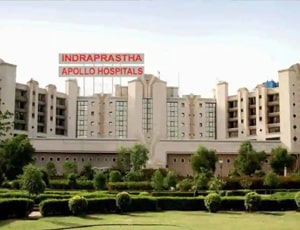
Types of Stroke Treatment in Indraprastha Apollo Hospital and its associated cost
| Treatment Option | Approximate Cost Range (USD) | Approximate Cost Range (INR) |
|---|---|---|
| Stroke Treatment (Overall) | 4592 - 6226 | 363110 - 500218 |
| Intravenous Thrombolysis | 2263 - 3329 | 182550 - 277930 |
| Mechanical Thrombectomy | 4583 - 6237 | 374901 - 518284 |
| Carotid Endarterectomy | 2868 - 3387 | 228476 - 281880 |
| Angioplasty and Stenting | 1670 - 2849 | 137215 - 225546 |
| Rehabilitation (Per Session) | 55 - 228 | 4604 - 18457 |
| Medications and Supportive Care | 1103 - 2249 | 92307 - 185930 |
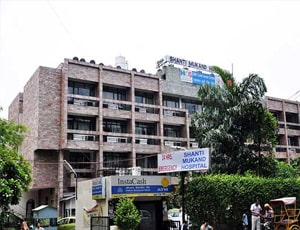
Types of Stroke Treatment in Shanti Mukand Hospital and its associated cost
| Treatment Option | Approximate Cost Range (USD) | Approximate Cost Range (INR) |
|---|---|---|
| Stroke Treatment (Overall) | 4044 - 5562 | 331872 - 458069 |
| Intravenous Thrombolysis | 2022 - 3052 | 166788 - 250317 |
| Mechanical Thrombectomy | 4064 - 5580 | 332004 - 457067 |
| Carotid Endarterectomy | 2529 - 3044 | 207652 - 249051 |
| Angioplasty and Stenting | 1523 - 2543 | 125044 - 209018 |
| Rehabilitation (Per Session) | 51 - 204 | 4178 - 16721 |
| Medications and Supportive Care | 1012 - 2034 | 83591 - 166238 |
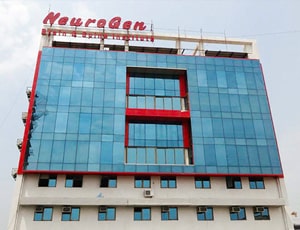
Types of Stroke Treatment in NeuroGen Brain and Spine Institute and its associated cost
| Treatment Option | Approximate Cost Range (USD) | Approximate Cost Range (INR) |
|---|---|---|
| Stroke Treatment (Overall) | 3796 - 5125 | 305905 - 419486 |
| Intravenous Thrombolysis | 1894 - 2803 | 153966 - 229332 |
| Mechanical Thrombectomy | 3722 - 5205 | 309623 - 416385 |
| Carotid Endarterectomy | 2358 - 2790 | 194394 - 230652 |
| Angioplasty and Stenting | 1406 - 2334 | 114794 - 189417 |
| Rehabilitation (Per Session) | 47 - 189 | 3777 - 15423 |
| Medications and Supportive Care | 939 - 1857 | 77553 - 154604 |
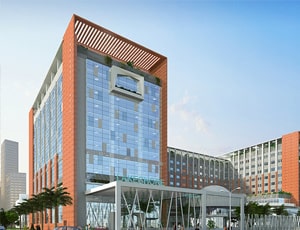
Types of Stroke Treatment in VPS Lakeshore Hospital and its associated cost
| Treatment Option | Approximate Cost Range (USD) | Approximate Cost Range (INR) |
|---|---|---|
| Stroke Treatment (Overall) | 4071 - 5564 | 331680 - 458583 |
| Intravenous Thrombolysis | 2021 - 3043 | 165871 - 250035 |
| Mechanical Thrombectomy | 4077 - 5556 | 332372 - 456070 |
| Carotid Endarterectomy | 2527 - 3056 | 207111 - 249294 |
| Angioplasty and Stenting | 1519 - 2549 | 124555 - 208729 |
| Rehabilitation (Per Session) | 51 - 203 | 4170 - 16573 |
| Medications and Supportive Care | 1015 - 2026 | 83204 - 166376 |
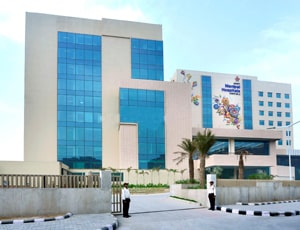
Types of Stroke Treatment in Manipal Hospital, Dwarka and its associated cost
| Treatment Option | Approximate Cost Range (USD) | Approximate Cost Range (INR) |
|---|---|---|
| Stroke Treatment (Overall) | 4040 - 5564 | 332198 - 457030 |
| Intravenous Thrombolysis | 2023 - 3051 | 166770 - 249732 |
| Mechanical Thrombectomy | 4043 - 5600 | 334487 - 457450 |
| Carotid Endarterectomy | 2547 - 3031 | 207568 - 249162 |
| Angioplasty and Stenting | 1516 - 2542 | 124376 - 209096 |
| Rehabilitation (Per Session) | 51 - 202 | 4155 - 16606 |
| Medications and Supportive Care | 1020 - 2035 | 83580 - 166912 |
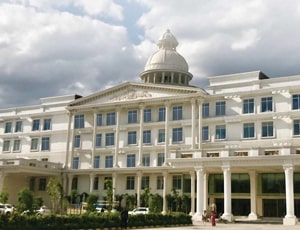
Types of Stroke Treatment in Dr. Rela Institute and Medical Centre and its associated cost
| Treatment Option | Approximate Cost Range (USD) | Approximate Cost Range (INR) |
|---|---|---|
| Stroke Treatment (Overall) | 4420 - 6108 | 365602 - 501319 |
| Intravenous Thrombolysis | 2224 - 3366 | 185283 - 282502 |
| Mechanical Thrombectomy | 4451 - 6133 | 362103 - 517316 |
| Carotid Endarterectomy | 2819 - 3306 | 228997 - 282242 |
| Angioplasty and Stenting | 1671 - 2774 | 138051 - 231594 |
| Rehabilitation (Per Session) | 57 - 228 | 4558 - 18198 |
| Medications and Supportive Care | 1117 - 2206 | 91517 - 184872 |
A stroke is a serious medical emergency. It's essential to seek medical help immediately. Getting prompt emergency assistance can minimize potential brain damage and complications associated with a stroke.
It is a loss of neurological function caused by a sudden interruption of continuous blood supply to the brain. Blood flow can be disrupted by a blockage, which causes ischemic stroke, or with bleeding in the brain, which causes hemorrhagic stroke, which is more fatal. Ischemic stroke accounts for the majority of strokes. Strokes frequently strike without warning, and the consequences may be catastrophic. Normal blood flow and oxygen to the brain must be restored as quickly as possible. The afflicted brain cells are either injured or die within minutes of being deprived of oxygen and essential nutrients. When brain cells die, they usually do not recover, causing severe damage that can lead to physical, cognitive, and mental problems.
Hemorrhagic Stroke: Emergency treatment for a hemorrhagic stroke focuses on managing bleeding and alleviating brain pressure from excess fluid. Here's how it's typically approached:
Ask your healthcare adviser for the best multiple options and choose the one that meets your expectations
In India, the average starting cost for Stroke Treatment is USD 3500. Only some of the best and certified hospitals in India perform Stroke Treatment for international patients.
The cost of Stroke Treatment in India may differ from one medical facility to the other. The Stroke Treatment package cost usually includes all the expenses related to pre and post surgery expenses of the patient. The comprehensive Stroke Treatment package cost includes the cost of investigations, surgery, medicines and consumables. A prolonged hospital stay due to delayed recovery, new diagnosis and complications after surgery may increase the cost of Stroke Treatment in India.
There are many hospitals across the country that offer Stroke Treatment to international patients. Some of the best hospitals for Stroke Treatment in India include the following:
After Stroke Treatment in India, the patient is supposed to stay in guest house for another 14 days. This time frame is important to ensure that the surgery was successful and the patient is fit to fly back.
There are certain expenses additional to the Stroke Treatment cost that the patient may have to pay for. These are the chanrges for daily meals and hotel stay outside the hospital. These charges starts from USD 50 per person.
Stroke Treatment in India is offered in almost all metropolitan cities, including the following:
There are many Stroke Treatment surgeons who offer video telemedicine consultation to patients who need this treatment. Some of them include the following:
| Doctor | Cost | Schedule Your Appointment |
|---|---|---|
| Dr. P K Sachdeva | USD 35 | Schedule Now |
| Dr. Pawan Garg | USD 18 | Schedule Now |
| Dr. Mukesh Pandey | USD 14 | Schedule Now |
| Dr. Sanjay Kumar Choudhary | USD 35 | Schedule Now |
| Dr. Ritu Jha | USD 14 | Schedule Now |
After Stroke Treatment, the patient is supposed to stay for about 3 days in the hospital for recovery and monitoring. This phase is important to ensure that the patient is recovering well and is clinically stable. During this time, several tests are performed before the patient is deemed suitable for discharge.
The average rating for Stroke Treatment hospitals in India is 3.9. This rating is automatically calculated on the basis of several parameters such as the infrastructure of the hospital, quality of services, nursing support and other services.
There are more than 6 hospitals that offer Stroke Treatment in India. The above listed hospitals are approved to perform the surgery and have proper infrastructure to handle Stroke Treatment patients. Apart from good services, the hospitals are known to follow all standard and legal guidelines as dictated by the local medical affairs body or organization.
Some of the top medical specialists for Stroke Treatment in India are:
A stroke is like a heart attack of the brain. In this condition, a blood vessel ruptures in the brain causing bleeding inside the brain or blockage in the supply to the brain. The blockage or rupture can deprive the brain tissues of oxygen and blood. Without oxygen and blood, the brain tissues and cells become damaged and start to die within minutes. A stroke is a serious condition that requires immediate attention and care.
Mainly there are three types of stroke:
The stroke needs immediate care. Getting care and treatment at the right time can help control the damage early on and reduce the long-term impact on the patient. The loss of blood during a stroke is responsible for damage to various parts of the brain. The symptoms are visible in parts of the body that are controlled by the affected areas of the brain. The symptoms of stroke may include:
There are many reasons that may lead to the occurrence of Ischemic and hemorrhagic strokes.
As mentioned above, the reason behind Ischemic strokes is blood clots that may happen due to many reasons including
There are many reasons for hemorrhagic strokes to occur including:
There are many factors that can make you more susceptible to developing a stroke. The National Heart, Lung, and Blood Institute have explained the risk factors of the stroke to be the following:
Your doctor can best guide you through the risk factors and suggest alternatives to prevent stroke.
There are many ways to reduce your risk of developing a stroke. However, it is not equivalent to preventing the stroke altogether. All it can do is reduce the risk of the condition. Some of the measures you can take are mentioned below:
Recovery from a stroke depends on a thorough medical assessment and prompt treatment. The course of your treatment is determined by the type of stroke:
Ischemic stroke and TIA
This type of stroke is generally caused by blood clots or blockages in the brain. Their treatment may incorporate
Hemorrhagic stroke
A stroke that takes place due to some kind of blood leakage or bleeding into the brain requires a different kind of treatment strategy. Treatments for hemorrhagic stroke include
Recovery was reported by nearly 65% of patients who underwent surgery for an ischemic stroke. Hemorrhagic stroke treatment has a marginally lower success rate because immediate attention is needed in this condition. Nearly 45% of patients have displayed signs of recovery when treated within the appropriate time frame.